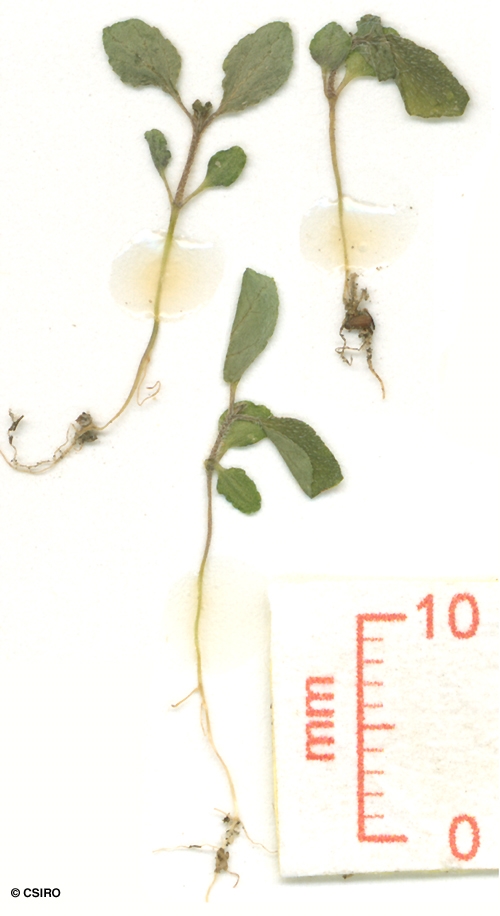Australian Tropical Rainforest Plants - Online edition
Verbena bonariensis L.




Linnaeus, C. von (1753) Species Plantarum 2: 20. Type: Habitat in agro Bonariensi.
Purpletop
Usually flowers and fruits as a shrub about 1-2 m tall.
Flowers borne in terminal spikes about 1-4 cm long. Spikes usually in umbellate or cymose clusters. Each flower about 2 mm diam., subtended by a bract about 3-5 mm long. Calyx about 3-4 mm long, hairy on the outer surface. Corolla tube usually less than twice as long as the calyx. Corolla blue to violet or purple, hairy on both the inner and outer surfaces. Stamens paired, dimorphic, two long and two short. Style and stigma 1 mm long.
Cotyledons ovate, about 3.5 x 3 mm. First pair of true leaves simple with two or three teeth on each side, hairy on both the upper and lower surfaces. At the tenth leaf stage: leaves sessile, blade margin with about 9-12 deep, coarse teeth on each side, upper and lower surfaces rough to the touch. Lateral veins depressed on the upper surface. Stems square in transverse section. Seed germination time 17 to 20 days.
An introduced species originally from South America now naturalised in NEQ, CEQ and southwards as far as Tasmania. Also in SA and the southwestern corner of Western Australia. Altitudinal range in NEQ from near sea level to 1000 m. Usually grows as a weed of agricultural land but also found along roads and in disturbed areas in rain forest.





